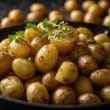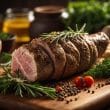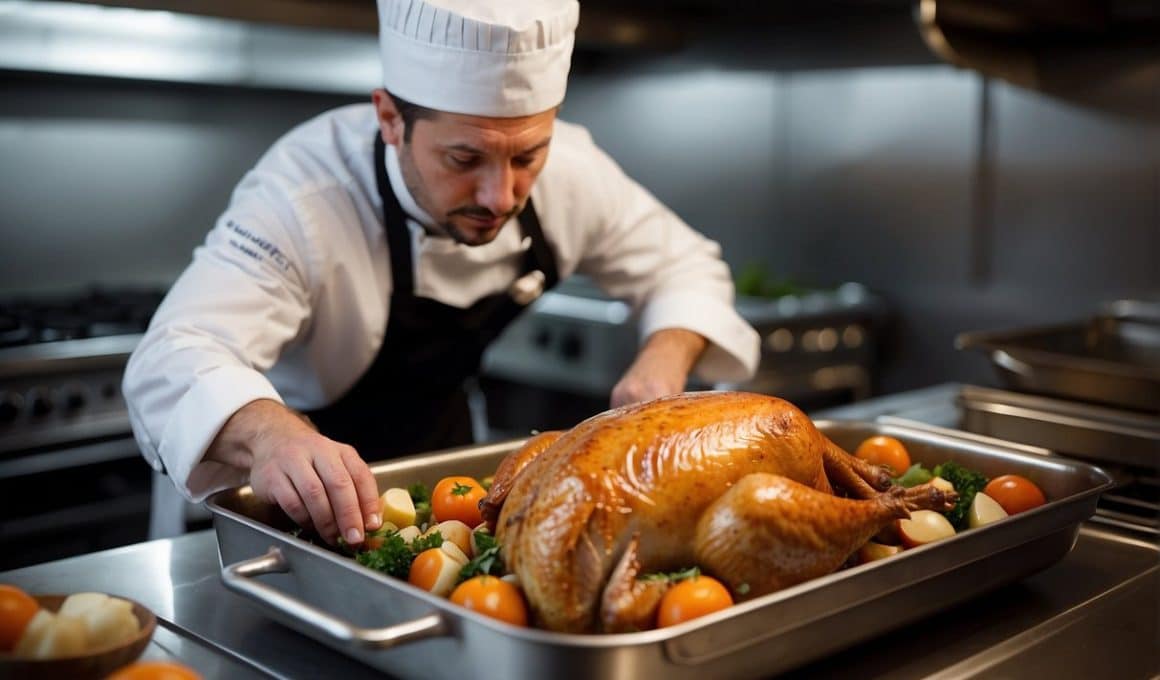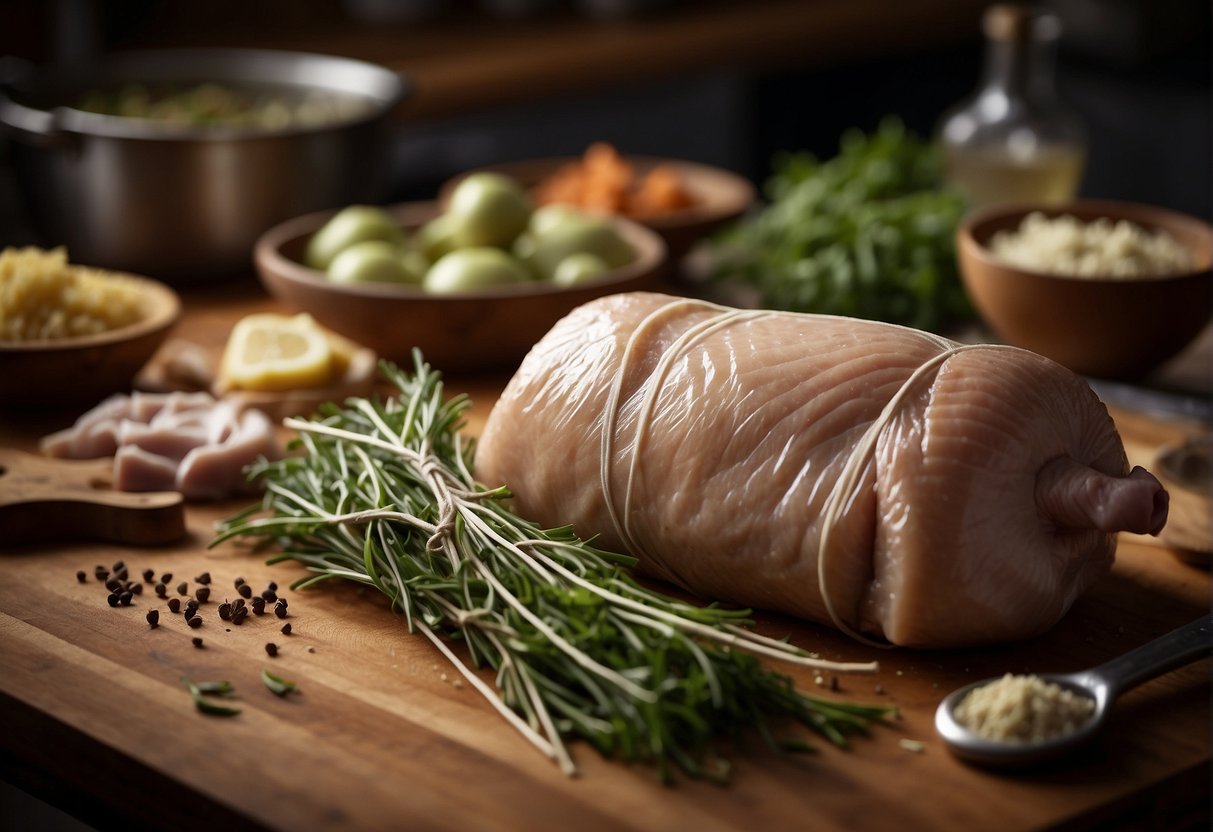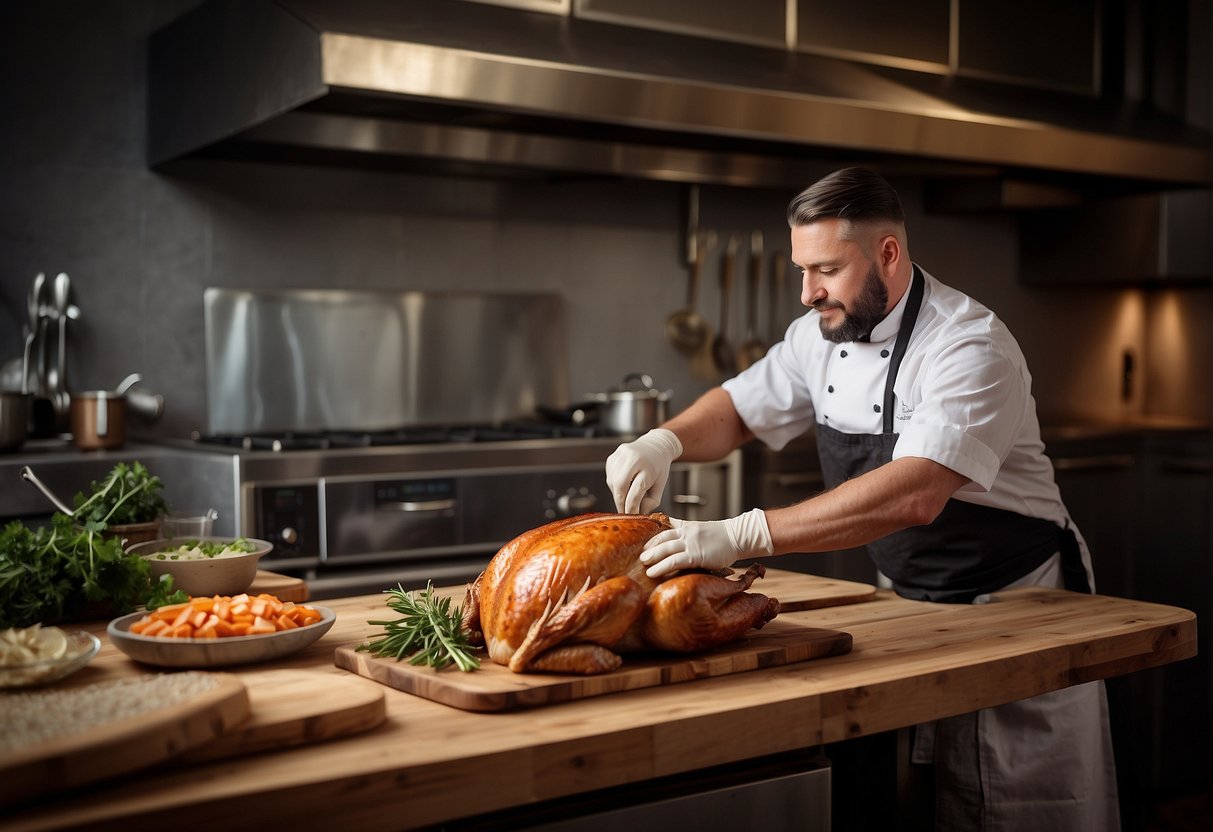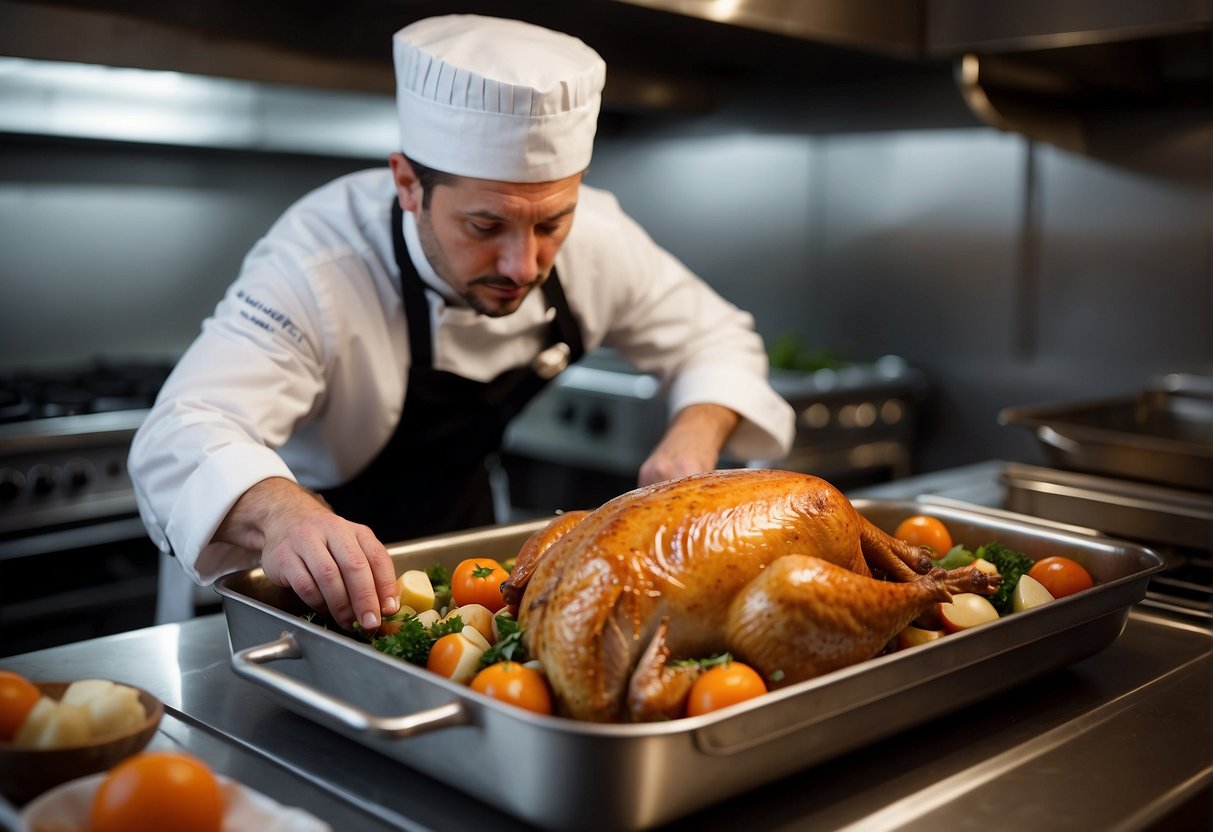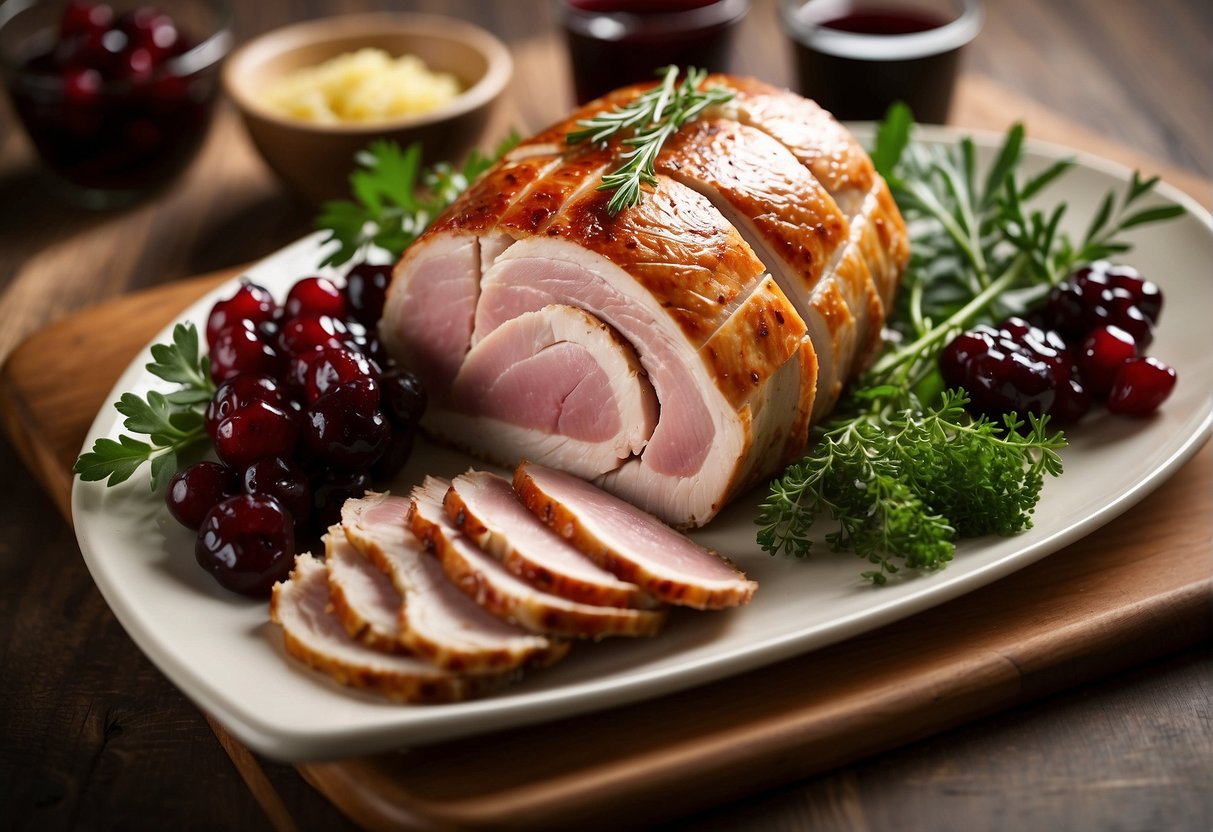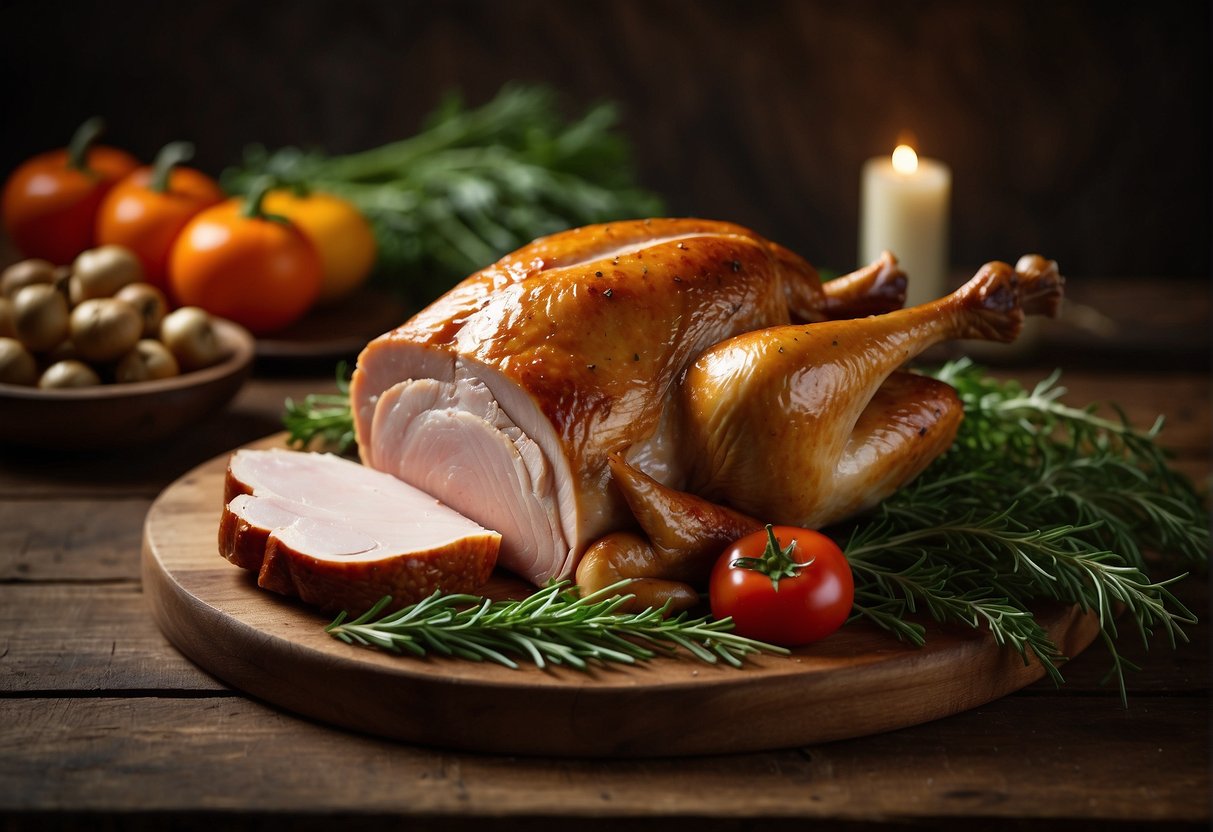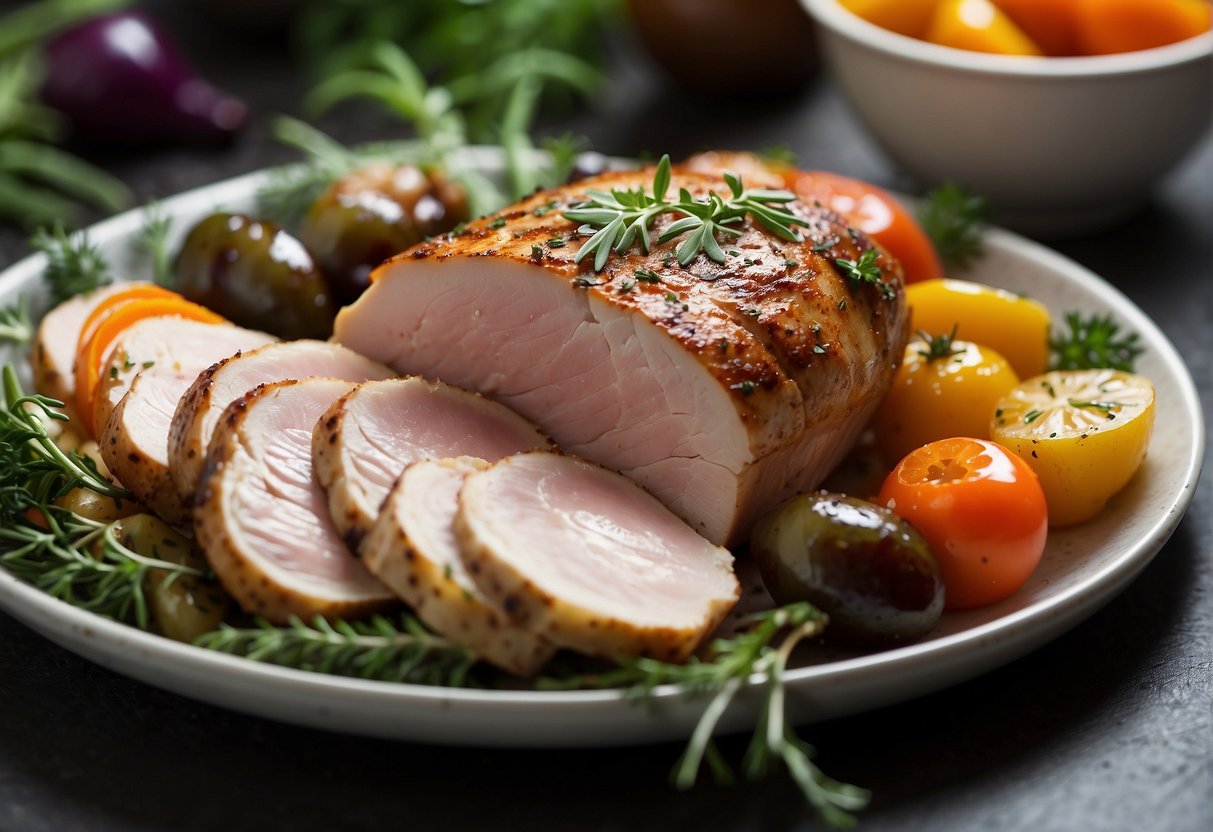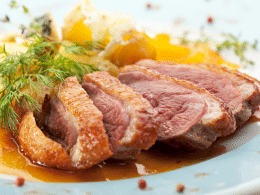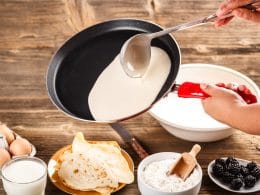Turkey ballotine is a delightful twist on traditional poultry dishes that offers a sophisticated presentation ideal for festive occasions or any gourmet meal. Instead of cooking a whole bird, turkey ballotine involves using a deboned turkey breast which is then stuffed with a flavorful filling, rolled, and cooked to perfection. This dish not only allows for a more even cooking process but also ensures each slice is rich with both meat and stuffing, making it a centerpiece at dinner parties. Preparing a turkey ballotine can be a creative endeavor, as it invites a variety of stuffing choices, from the traditional pork mince and herbs to more extravagant mixtures featuring nuts, fruits, or a medley of spices.
The preparation of turkey ballotine may seem daunting, but with a methodical approach, it becomes an achievable task for home cooks. It begins with carefully butterflying and flattening the turkey breast to create an even canvas for the stuffing. After layering the stuffing onto the meat, the next step is to roll the turkey into a cylindrical shape, followed by techniques such as trussing with kitchen twine to retain its form during cooking. The rolled turkey is then typically browned to develop flavor before being roasted or braised until it reaches the ideal internal temperature, ensuring a juicy and succulent result.
Key Takeaways
- My approach to turkey ballotine ensures a balanced distribution of meat and stuffing.
- My method includes butterflying the breast, adding filling, rolling, and trussing before cooking.
- My turkey ballotine is cooked until juicy and succulent, making it a festive centerpiece.
Understanding Ballotine
When I prepare a ballotine, I’m creating a dish that’s exquisite in its presentation and rich in flavor. Let’s explore what makes a ballotine an excellent choice for a refined meal.
Definition of Ballotine
A ballotine is a type of meat preparation where I debone the meat, often turkey, chicken, duck, or even pork, then stuff it, roll it, and tie it into a bundle. This method transforms the meat into a compact shape that is convenient to slice, serving up a medley of flavors in each portion.
Varieties of Ballotine
The variations of ballotine are numerous, each offering a unique taste experience. Turkey ballotine might be filled with a blend of herbs, breadcrumbs, or other meats such as sausage for a hearty texture. With chicken and duck, stuffing often includes fruits like cranberries or apricots, which complement the meat’s natural flavors. Pork ballotine could feature richer ingredients like nuts or cheese. Each variety aims to showcase the natural flavors of the meat while enhancing them with the fillings.
Ingredients for Turkey Ballotine
Creating a flavorful turkey ballotine involves careful selection of the meat and a combination of aromatic ingredients and additional stuffing elements. I will guide you through choosing the best quality meat, the right aromatic herbs and vegetables, as well as other essential items to create a rich and savory dish.
Selecting the Meat
When I choose the meat for turkey ballotine, I look for a large turkey breast, ideally about 700-800g, which allows for easy rolling and sufficient filling. The turkey breast should be boneless and skinless to make the preparation simpler. Although, if preferred, skin-on can be used for additional flavor.
Aromatic Ingredients
The aromatic base is essential for imparting flavor to the turkey ballotine. I recommend using sea salt and freshly ground pepper to season the meat well. Fresh sage leaves, chopped onion, and minced garlic are crucial for building the foundational flavors. To enhance the aromatics, I drizzle olive oil over the ingredients before mixing them, as this helps to release their essential oils and deepens the taste.
Additional Stuffing Ingredients
For the stuffing, I personally like a mix that includes sausage meat for its fat content and flavor. Fresh breadcrumbs serve as a binder for the stuffing, while finely chopped mushroom adds umami. I also incorporate leafy spinach and sweet cranberries to create a balance of flavors and textures. All these components contribute to a rich and succulent filing that complements the turkey perfectly.
Preparation Techniques
In crafting a turkey ballotine, precision with meat preparation, careful stuffing, and secure wrapping are paramount to a successful dish. I follow these steps meticulously, striving for a balance of flavor and presentation.
Meat Preparation
When I begin preparing the meat, my primary tools are a sharp knife and a chopping board. I choose a boneless turkey breast, ensuring it lays flat and even on the board. I carefully remove the skin in one motion, preserving its integrity for later use. With gentle, decisive cuts, the turkey is then trimmed of any excess fat or sinew.
Stuffing Method
The stuffing is the heart of the ballotine – both in terms of flavor and structure. I use a combination of ingredients such as chestnuts, mushrooms, and pancetta to create a rich and savory mixture. On a clean surface, possibly a sheet of plastic wrap, I spread the forcemeat evenly over the meat, leaving a border to ensure it stays within when rolled.
Wrapping and Tying
Wrapping demands finesse and attention to detail. I lay the skin previously set aside back onto the flattened breast, then gently roll the turkey, ensuring the stuffing remains encased. Next, I use string – cut into uniform lengths – to tie the ballotine at regular intervals, crafting a symmetrical shape that will cook evenly. This process is a true testament to a chef‘s skill in achieving both form and function in a dish.
Cooking Instructions
Creating a succulent turkey ballotine involves careful oven preparation and attention to the roasting process. By following specific steps for temperature settings and cooking times, you’ll ensure a perfectly cooked ballotine with a flavorful crust and tender interior.
Preheating and Oven Preparation
Before I start preparing the turkey, I make sure to preheat my oven. This step is crucial for a consistent cooking environment. For a turkey ballotine, heating your oven to an appropriate preheat oven temperature of 375 degrees Fahrenheit (190 degrees Celsius) is generally ideal. While the oven heats, I line a roasting pan or dish with foil for easy cleanup and to help reflect heat, ensuring a more even cook.
Roasting Process
Once the oven is preheated, I place the turkey ballotine into the roasting pan. I then proceed with the roasting process by cooking the turkey in the preheated oven. It’s important to occasionally baste the turkey to keep it moist and to develop a golden-brown exterior. Using a meat thermometer to check the internal temperature is crucial. The goal is to reach 165 degrees Fahrenheit (74 degrees Celsius) at the thickest part of the ballotine, indicating it’s cooked through and safe to eat. Baking time can vary based on the size of the turkey breast, but I generally start checking the temperature after it’s been roasting for about an hour.
Resting and Serving
After my turkey ballotine has been skillfully cooked to perfection, it’s paramount to follow two crucial steps before serving: resting the meat, and presenting it with finesse. These ensure the flavors settle and the appearance of the dish lives up to its taste.
Resting After Oven
When I remove my turkey ballotine from the oven, I give it ample resting time. I’ve found that letting it rest for at least 15 minutes allows the juices to redistribute throughout the meat. This crucial pause prevents the juices from running out onto the cutting board when carving, which would result in a dryer ballotine.
Carving and Presentation
Carving the ballotine is an art in itself. I make sure that my carving knife is sharp to get clean and precise slices. The aim is to create even, visually appealing portions that showcase the stuffed interior. For presentation, I arrange the slices neatly on a platter, complemented by my choice of side dishes. Traditional favorites like roasted root vegetables or a vibrant green salad make excellent pairings that I often opt for.
Seasonal Tips
Turkey ballotine, an elegant twist on traditional poultry dishes, adapts beautifully to seasonal ingredients and flavors. I’ll guide you through perfecting your ballotine for Thanksgiving and Christmas, ensuring your holiday meals are both impressive and delectable.
Thanksgiving Special
For Thanksgiving, I suggest making a turkey ballotine that’s both a centerpiece and a nod to the traditional flavors we all love. Ingredients are key here: start with a high-quality turkey breast, which can be ordered from your local butcher or sourced online for convenience (like at the Gordon Ramsay Academy).
- Stuffing: Opt for a mix of pork mince, finely chopped streaky bacon, mushrooms, onions, breadcrumbs, and herbs such as tarragon or parsley. If you’re aiming for a lighter option, consider using a fruit-based stuffing with dried cranberries for a tart contrast (more ideas at Chez Le Rêve Français).
- Preparation: Don’t skip on butterflying and pounding the turkey breast to an even thickness; this will ensure that your ballotine cooks evenly. Layer it with rashers of streaky bacon and maple syrup for an extra layer of flavor.
Christmas Feast
Christmas, with its festive atmosphere, calls for a show-stopping turkey ballotine. I like to focus on presentation and luxurious ingredients for the ultimate Christmas feast.
- Christmas Recipes: Fill your turkey ballotine with a rich stuffing. Think chestnuts, sausage meat, and sage, delivering those classic Christmas flavors. For a detailed method on butterflying and stuffing the breast, Great British Chefs provides clear instructions to ensure success.
- Accompaniments: Serve your ballotine alongside a potato rosti and some buttered baby gem lettuces, all of which complement the turkey exceptionally well, as highlighted by this Great British Chefs recipe.
Remember, whether it’s Thanksgiving or Christmas, the secret to a perfect turkey ballotine lies in the quality of your ingredients and the care you take in preparation.
Accompaniments and Pairings
When serving turkey ballotine, I find that picking the right accompaniments and wine pairings is crucial to create a harmonious meal. The sides should complement the flavors of the ballotine, while the wine should enhance the overall dining experience.
Sides
For a rich and elegant dish like turkey ballotine, sides that offer both textual contrast and complementary flavors are essential. I often suggest a creamy Green Bean Casserole, as the crispiness of the fried onions and the creaminess of the mushroom sauce pair well with the succulent turkey. Considering the refined nature of ballotine, Roasted Carrots seasoned with bay leaves and thyme are another excellent choice; they provide a tender and slightly sweet counterpoint.
Adding a moreish crunch, a walnut-studded salad with a subtle tarragon dressing can uplift the palate between the bites of the ballotine. The nuttiness of walnuts matches nicely with the savory ballotine, especially if it’s wrapped in prosciutto or Parma ham, which introduces a delightful saltiness to the dish.
Wine Pairings
The wine choice for turkey ballotine should both respect and elevate the poultry’s delicate flavors. For white wine lovers, I typically recommend a full-bodied Chardonnay, which has the depth to stand up to the turkey and the rich accompaniments like a creamy casserole. The buttery notes work well with the soft texture of the ballotine and its accompaniments. For red wine, a lighter option such as Pinot Noir can be ideal, offering a balance of fruit and earthiness without overwhelming the turkey.
When the ballotine includes cured meats like prosciutto, consider a Port as a more adventurous pairing. Its sweetness and body are a surprising match for the salty richness of the ham. If you’re not serving the ballotine as part of a festive meal and instead as a standalone dish, this wine can turn the experience into a special occasion.
Storage and Safety
When I create a turkey ballotine, ensuring its safety and quality involves proper storage methods. Each step from refrigeration to freezing and reheating requires attention to detail to keep the ballotine delicious and safe to consume.
Refrigeration
After preparing my turkey ballotine, I make it a point to store it in the refrigerator within two hours of cooking to prevent bacterial growth. I ensure the refrigerator is at a safe temperature, typically below 40°F (4°C). With no bones in the ballotine, it cools down more uniformly, minimizing the risk of some areas staying warm enough for bacteria to thrive. I wrap the ballotine in moisture-resistant material or airtight containers to maintain its quality.
Freezing and Reheating
For long-term storage, I freeze the turkey ballotine. The freezer must be at 0°F (-18°C) or below to safely store the ballotine for several months. I label the package with the date to manage rotation and usage. To reheat, I always thaw it in the refrigerator or use the defrost function on my microwave to prevent any increase in moisture which can lead to uneven cooking. Once thawed, I reheat it in the oven or microwave until it reaches an internal temperature of 165°F (74°C), ensuring it’s safe to eat.
Advanced Techniques
In my experience, mastering advanced techniques in preparing a turkey ballotine can elevate the dish, making it a standout at any dining event. I focus on precision and creativity to enhance flavor and presentation.
Professional Tips
When I’m aiming for that professional edge, attention to detail is paramount. I always ensure the turkey skin is removed in one piece, which is crucial for a pristine presentation. This technique can be seen in the National Turkey Federation’s approach, where the skin is reserved, chilled, and later used to encase the rolled meat.
Achieving an even thickness across the turkey breast is essential before stuffing and rolling. For this, I use a meat mallet or a rolling pin, similar to the guidance provided by the Great Italian Chefs. An even surface promotes uniform cooking and a balanced ratio of meat to stuffing in every slice.
Creative Variations
I love adding my twist to traditional dishes. For a turkey ballotine, experimenting with fillings can introduce new flavors. Inspired by recipes like the Turkey Ballotine from the Gordon Ramsay Academy, I might incorporate a medley of sautéed mushrooms, herbs, and shallots for a hearty filling.
Pairing meat with appropriate seasonings can also offer a unique taste experience. Wrapping the stuffed turkey in prosciutto with sage, seen in this Food Network recipe, adds saltiness and depth, which complements the tender turkey.
I capitalize on my role as a chef to infuse every dish with creativity. Whether I’m tailoring recipes for a corporate newsletter or experimenting with different cooking techniques using my food processor, these advanced practices elevate not just the flavor profile but also the overall aesthetics of the turkey ballotine.
Frequently Asked Questions
In this section, I’ll cover some of the most common inquiries about preparing, cooking, and serving turkey ballotine.
How do you prepare a stuffed turkey ballotine?
I start by butterflying the turkey breast to lay it out flat. Then, I add the stuffing and roll the meat tightly before roasting.
What temperature should a turkey ballotine be cooked to in the oven?
A turkey ballotine should be cooked to an internal temperature of 165°F, as measured with a meat thermometer to ensure it’s safe to eat.
What are some popular fillings for turkey ballotine?
Popular fillings for turkey ballotine include pistachio forcemeat, herbs, breadcrumbs, and various types of sausage or ground meat.
Can turkey ballotine be cooked using a sous vide method, and how does it affect the flavor?
Yes, turkey ballotine can be cooked sous vide, resulting in meat that’s evenly cooked and tender, and it allows flavors to meld beautifully.
What are the nutritional values, such as calories, in a serving of turkey ballotine?
The nutritional values, including calories, in turkey ballotine vary depending on the fillings, but it’s generally a lean and protein-rich dish.
How does the cooking time for a turkey ballotine compare to a traditional roast turkey?
Generally, a turkey ballotine has a shorter cooking time compared to a traditional whole roast turkey, as it’s a smaller, boneless preparation.


